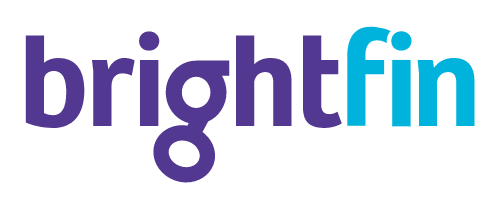Description

Abacus

brightfin

Volopay
Comprehensive Overview: Abacus vs brightfin vs Volopay
Certainly! Here's a comprehensive overview of Abacus, Brightfin, and Volopay, covering their primary functions, target markets, market share, user base, and key differentiating factors:
Abacus
a) Primary Functions and Target Market:
- Primary Functions: Abacus is a real-time expense management solution that automates expense reporting for businesses. It uses rules-based automation to streamline the process of submitting, approving, and reimbursing expenses.
- Target Market: Abacus primarily targets small to medium-sized enterprises (SMEs) and mid-market companies looking for efficient and less time-consuming ways to handle expenses.
b) Market Share and User Base:
- Abacus, as a part of the growing expense management software market, has a moderate market share compared to giants like Concur or Expensify. It is gradually adopted by businesses that are tech-savvy and look for real-time solutions for expense management.
c) Key Differentiating Factors:
- Real-time Processing: Abacus focuses on real-time expense reporting and reimbursement, differentiating itself from batch processing systems.
- Automation and Customization: It offers automatic reconciliation, approval workflows, and customized expense policies.
- Ease of Integration: Abacus integrates seamlessly with various accounting software, which enhances its appeal among businesses looking for systems that adapt to their existing solutions.
Brightfin
a) Primary Functions and Target Market:
- Primary Functions: Brightfin is an IT expense management platform that focuses on managing telecom, mobile, and cloud expenses. It combines asset management, billing, and expense solutions to provide visibility and control over IT costs.
- Target Market: Brightfin primarily serves larger enterprises and organizations with complex IT environments. It is ideal for companies needing comprehensive IT asset management.
b) Market Share and User Base:
- Brightfin holds a niche market within IT expense management, catering to businesses that have significant telecommunications and cloud service expenditures. This market is smaller compared to general expense management solutions but is vital for companies with large IT infrastructures.
c) Key Differentiating Factors:
- Specialization in IT Expenses: Unlike general expense management tools, Brightfin excels in managing IT and telecommunication expenses, offering detailed insights into such costs.
- Cloud Expense Management: Provides tools for monitoring and managing cloud costs, a critical need for companies with extensive cloud operations.
- Comprehensive Visibility: Offers detailed reporting and analytics that aid in strategic IT financial planning and cost optimization.
Volopay
a) Primary Functions and Target Market:
- Primary Functions: Volopay is a business financial management platform with spend management, corporate cards, bill payments, and accounting automation functions.
- Target Market: The product is targeted at startups and SMEs. It's designed for businesses seeking a modern approach to managing finances with integrated solutions.
b) Market Share and User Base:
- Volopay is part of the emerging fintech market that combines expense management with financial services. While it's a newer entrant compared to older competitors, it is rapidly gaining traction, especially in Asia-Pacific regions and among tech-savvy SMEs.
c) Key Differentiating Factors:
- Unified Financial Management: Combines corporate cards, spend control, and automated reconciliation in one platform, providing a comprehensive solution for financial operations.
- Focus on Startups and SMEs: Specifically designed to meet the needs of smaller businesses, offering them tools to scale and manage finances efficiently.
- Regional Focus: Has a strong presence in Asia-Pacific and aims to address region-specific financial management challenges.
Comparative Analysis:
- Target Market & Specialization: Abacus is broadly focused on expense management similar to general tools but with a real-time approach, while Brightfin specializes in IT and telecom expenses with a focus on larger enterprises. Volopay offers a more comprehensive financial management solution focused on startups and SMEs.
- Differentiating Factors: The distinguishing factor is primarily based on specialization (IT for Brightfin) and integration of financial services (Volopay), whereas Abacus differentiates itself through real-time processing.
- Market Penetration and Adoption: All three have carved niches for themselves; however, their market share varies widely based on specialization, with Brightfin strong in telecom/IT sectors, and Volopay appealing to SMEs in fintech.
In summary, these products serve specific needs within the broader finance and expense management software market, with their differences largely defined by industry focus and functional breadth.
Contact Info

Year founded :
2021
Not Available
Not Available
Not Available
Not Available

Year founded :
2001
+1 415-200-2888
Not Available
United States
http://www.linkedin.com/company/brightfin-software

Year founded :
2020
+65 8535 4016
Not Available
Singapore
http://www.linkedin.com/company/volopay
Feature Similarity Breakdown: Abacus, brightfin, Volopay
Abacus, brightfin, and Volopay are financial management and expense tracking tools, each with its own unique approach and features. Here's a breakdown of their feature similarities and differences:
a) Core Features in Common:
-
Expense Management:
- All three platforms offer functionalities to manage and track employee expenses in real-time. They typically provide tools for expense report creation, submission, and approval workflows.
-
Receipt Capture:
- Users can capture and upload receipts using mobile or desktop platforms, often with OCR (Optical Character Recognition) capabilities to ease data entry.
-
Integration with Accounting Software:
- Each solution integrates with popular accounting software like QuickBooks, Xero, and NetSuite to streamline financial processes and ensure accurate bookkeeping.
-
Automated Reconciliation:
- These platforms provide automated reconciliation of expenses with corporate cards or bank statements, reducing the manual effort required for financial closings.
-
Policy Compliance:
- Built-in policy enforcement ensures that submitted expenses comply with company policies, flagging non-compliant expenses for review.
b) User Interface Comparison:
-
Abacus:
- Abacus is known for its intuitive and user-friendly design, focusing on ease of use for submitting expenses. The dashboard is clean and emphasizes on real-time expense reporting with quick access to approval processes.
-
brightfin:
- brightfin's interface is comprehensive, focusing not only on expense management but also telecom and IT expense management, which might make it more complex for users only interested in traditional expense tracking. Its UI is designed to handle detailed cost allocations and provides robust reporting capabilities.
-
Volopay:
- Volopay has a modern and sleek user interface that appeals to start-ups and tech-savvy teams. It features a dynamic dashboard that provides insights into spend analytics and cash flow management, making it user-friendly for financial oversight.
c) Unique Features:
-
Abacus:
- Real-Time Expense Reporting: Abacus emphasizes real-time expense reporting and instant reimbursement, setting it apart for companies looking for "on-the-go" expense processing.
- Team Syncing and Budgets: The platform allows for quick team syncing and budget tracking, ideal for dynamic and fast-paced companies.
-
brightfin:
- Telecom Expense Management: Unique to brightfin is the inclusion of telecom expense management, offering detailed telecom cost breakdowns and optimization tools.
- IT Finance Management: brightfin extends beyond standard expenses to offer IT finance management, which includes managing IT subscriptions and resources.
-
Volopay:
- Corporate Cards Management: Volopay offers its own corporate cards with spend controls, allowing businesses to manage spend in real-time with limits and approval flows.
- Multi-Currency Wallets and Exchange: Particularly useful for businesses operating in multiple countries, Volopay supports multi-currency wallets and offers competitive exchange rates.
Each of these tools brings something unique to the table, catering to different business needs from straightforward expense management to more comprehensive financial, telecom, and IT expense solutions.
Features

Not Available

Not Available

Not Available
Best Fit Use Cases: Abacus, brightfin, Volopay
When considering financial management tools like Abacus, brightfin, and Volopay, it's essential to understand how each product's features and capabilities align with specific business needs and types. Here's a breakdown of their best-fit use cases:
a) Abacus
Best Choice For:
- Small to Medium-Sized Businesses (SMBs): Abacus is ideal for SMBs looking for a user-friendly expense management solution that offers real-time insights and flexibility.
- Companies with Frequent Employee Expenses: Firms with a significant volume of employee-initiated expenses, such as travel or client-related costs, benefit greatly due to its dynamic approval workflows.
- Businesses Prioritizing Compliance and Policy Enforcement: Abacus excels in rule-based policy enforcement before expenses are finalized, ensuring that employee spending aligns with corporate policies.
Industry Verticals:
- Technology, consulting, and professional services where business expenses are common and need efficient tracking.
- Creative industries that require flexible controls over spending.
b) brightfin
Preferred Option For:
- Large Enterprises and Telecom-Heavy Industries: brightfin is particularly beneficial for companies with substantial telecom expenses, as it offers robust telecom expense management capabilities.
- Businesses with Global Operations: Companies with international presence can leverage brightfin's ability to manage costs across various networks and geographies.
- Organizations Needing IT and Cloud Expense Management: It's effective for businesses that require consolidated management of IT expenses, telecom, and cloud services in one platform.
Industry Verticals:
- Telecommunications, IT services, and any industry with large-scale, complex IT and telecom infrastructure.
- Financial services and healthcare, where managing mobile and cloud expenses is critical.
c) Volopay
When to Consider:
- Startups and High-Growth Companies: Volopay is well-suited for startups and fast-growing firms that need streamlined expense procedures and rapid scalability.
- Businesses Seeking Integrated Corporate Cards and Spend Management: With its virtual card offerings, Volopay helps businesses consolidate card spending and expense tracking.
- Companies Requiring Automated and Paperless Financial Processes: Firms looking to eliminate manual processing and embrace a digital spend management system.
Industry Verticals:
- E-commerce, tech startups, and innovative companies that need a modern approach to finances.
- SMEs across diverse sectors that require simplified financial operations.
d) Catering to Different Industry Verticals or Company Sizes
Each tool offers distinct advantages based on the size and industry of a company:
-
Abacus caters primarily to SMBs across various industries where managing individual employee expenses is a priority. Its appeal lies in its simplicity and real-time feedback for policy compliance.
-
brightfin serves large enterprises and industries with heavy reliance on IT and telecom services. It's engineered to handle the complexities of telecom expenses and larger budgets.
-
Volopay aligns with the agile needs of startups and SMEs that prioritize digital-first solutions for financial operations. Its strength lies in its ability to integrate spend management with digitally issued corporate cards.
In summary, the choice between these products depends heavily on the specific financial management needs, company size, and industry sector dynamics of a business.
Pricing

Pricing Not Available

Pricing Not Available

Pricing Not Available
Metrics History
Metrics History
Comparing teamSize across companies
Conclusion & Final Verdict: Abacus vs brightfin vs Volopay
To provide a conclusion and final verdict for Abacus, Brightfin, and Volopay, it's important to assess these financial management and expense tracking platforms on various factors such as features, pricing, scalability, user experience, and customer support. Here’s a breakdown of each:
a) Considering all factors, which product offers the best overall value?
Volopay tends to offer the best overall value, especially for startups and small to medium-sized businesses looking for a comprehensive financial management solution. Its integrated approach, combining expense tracking, accounting software features, and the ability to manage corporate cards, provides a well-rounded system that can help streamline financial operations efficiently.
b) Pros and Cons of Each Product
Abacus:
-
Pros:
- Real-time expense reporting and approval processes.
- User-friendly interface that makes it easy for employees to submit expenses.
- Automation features that help reduce manual work.
-
Cons:
- May not be as robust in integrating with other financial management systems.
- Could be costlier for smaller organizations with limited budgets.
Brightfin:
-
Pros:
- Strong telecom expense management capabilities.
- Efficient asset management and IT expense features.
- Good for large corporations with complex telecom and IT structures.
-
Cons:
- Might be overly complex for small businesses without extensive IT expenses.
- Implementation can be time-consuming and resource-intensive.
Volopay:
-
Pros:
- Comprehensive platform combining multiple financial management tools.
- Budget-friendly options for startups and SMEs.
- Offers flexibility with both virtual and physical corporate cards.
-
Cons:
- Still evolving, so some features might lack the depth seen in more established competitors.
- Regional availability and support might be limited to specific markets.
c) Recommendations for Users Deciding Between Abacus vs Brightfin vs Volopay
-
If you are a startup or SME looking for an integrated financial management tool that balances cost and functionality, Volopay could be the best fit. Its all-in-one offering simplifies financial tracking without overwhelming smaller teams.
-
If you are part of a large organization that needs specialized IT and telecom expense management, Brightfin would be more appropriate because of its focused capabilities in those areas.
-
If your priority is seamless, real-time expense reporting and you want a straightforward platform that's easy for employees to use, then Abacus might be the best choice.
Ultimately, the decision should align with your specific business needs, budget constraints, and the complexity of your financial management requirements. It's advisable to take advantage of demos or trial periods offered by these companies to better understand which platform best fits your organizational processes and goals.